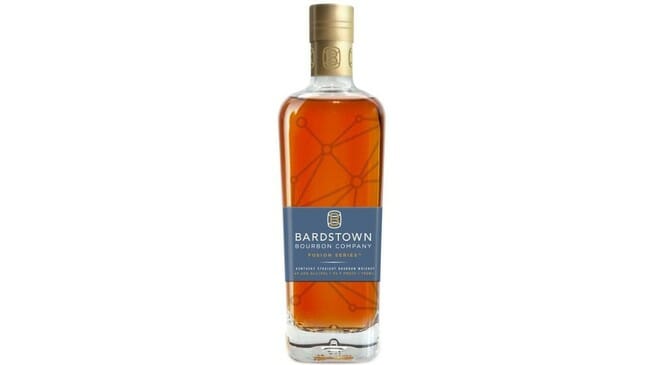What Are the Best Bourbons Under $60?
Photos via Heaven Hill, Brown-Forman, Jim Beam, Wild Turkey, Buffalo Trace, Four Roses, Maker's Mark, Barton 1792, Diageo, Bardstown Bourbon Drink Features whiskey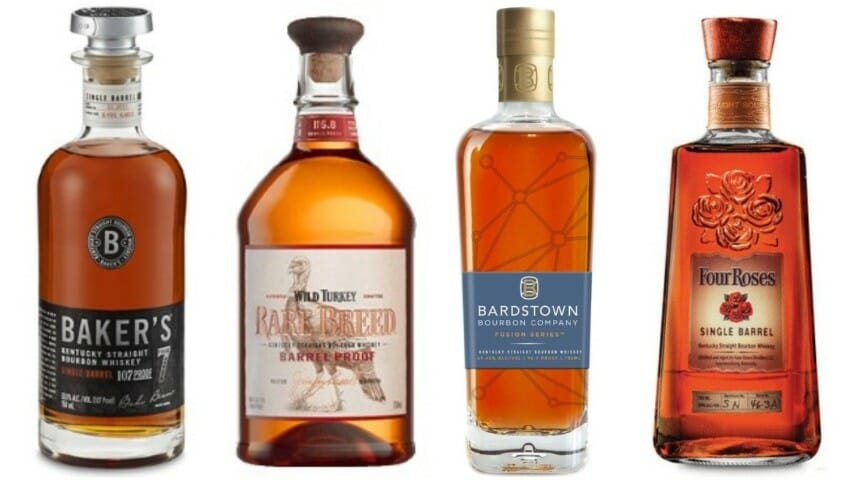
Cocktail Queries is a Paste series that examines and answers basic, common questions that drinkers may have about mixed drinks, cocktails and spirits. Check out every entry in the series to date.
We’ve already published some overarching pieces on the concept of “value” as it exists within different price tiers of the bourbon world, but this seems like a good moment to dig down a little deeper. To set a specific price cap, and really get into what the best bourbons available at that level might be. We started with an exploration of the best bourbons widely available for less than $30. Now it’s time to double that figure, and take on the entire bourbon mid-shelf, with the best bourbons for less than $60.
A few things to note:
— For the sake of accessibility, we’re keeping this to major, widely available brands whenever possible, rather than offerings from micro distilleries that may be available in only one city or state.
— You’re not going to see something like W.L. Weller 12 Year or Stagg Jr. on here, for the simple fact that although their list prices may be around $50, retailers are routinely gouging all the way to $300 or beyond for them, which is a level both ridiculous and irresponsible for what are meant to be accessible, mid-shelf brands. We’ve written about this price gouging problem in much greater detail, and will be keeping this piece to brands that are genuinely found at their MSRPs.
Why $60 as a set level, then? Well, this feels to us more or less like the unofficial demarcation point between “mid shelf” and “top shelf” as it exists in the whiskey world in this particular moment. There are a lot of brands jostling for the $50-60 space in particular, and once you go beyond $60 the MSRPs seem to accelerate quickly. You might say that in particular, once you pass the $60 mark the concept of “value” becomes increasingly hard to quantify. Please note: Because we’ve already covered the best bourbons for less than $30, the bottles you’ll find here will all land roughly between $30 and $60.
So let’s go ahead and answer the question: What are the best pure bourbons for less than $60? I’ll arrange these in approximate order of price.
George Dickel Bourbon Whisky (8 Year Old)Distillery: Cascade Hollow Distilling Co. (George Dickel)
ABV: 45% (90 proof)
Price: $33
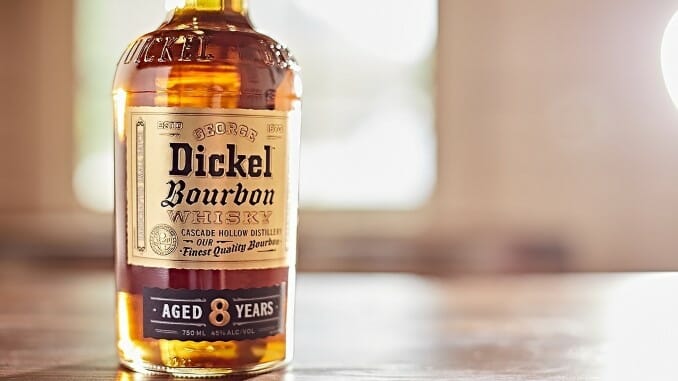
The George Dickel brand encompasses a lot of different products; so many in fact, that one has to wonder if they have so many high-value brands between $20-50 that they might even be cannibalizing a bit of their own market. Regardless, the vast majority of Dickel products are labeled as Tennessee whisky, despite the fact that they’re made from familiar bourbon mash bills. This newer addition to the lineup from last year, though, does not undergo the charcoal filtration process that is traditional for Tennessee whiskey, and the company thus sought to use it as a way to more deeply set foot in the bourbon-specific market. And you’re definitely getting great bang for your buck here, which is classic Dickel. A more-than-ample age statement, solid proof point, and assertive flavors make it a steal at around $30. As we wrote when first tasting it:
On the nose, George Dickel Bourbon leads off with sweet nuttiness, evoking sweetened peanut butter and creamy toffee candies, coupled with fresh vanilla bean. It’s a nice, rich nose that really leans in on sweeter elements of caramelized sugars and vanillans, although it then transitions in a roastier direction that offers up coffee and sweet tobacco. In this price range in particular, it’s a really attractive nose, and I find myself really enjoying the sweet, oaky char in particular. On the palate, this bourbon is not quite as rich as it might seem on the nose, but it still mirrors many of those same flavors. I’m getting caramel corn right off the bat, into significant nuttiness evoking both peanuts and almond butter. The spice then comes in assertively, with hints of rye spice, black pepper and red chile flakes. Caramel candies give way to more of that char from the nose, and the roasted oak offers up a bit of bitter balance.
Eagle Rare BourbonDistillery: Buffalo Trace
ABV: 45% (90 proof)
Price: $35
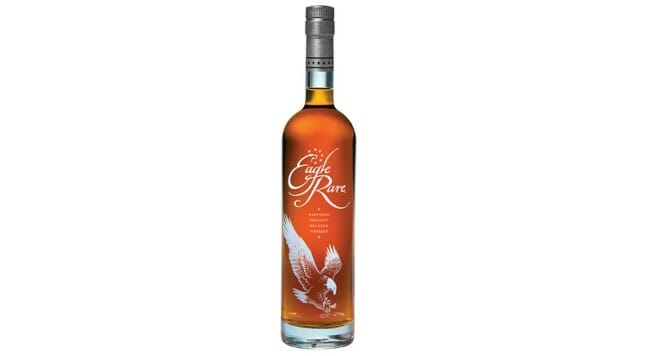
Eagle Rare is pretty much the best entry in the Buffalo Trace lineup to avoid being afflicted by price gouging and painful mark-ups—at least in most places, it can still be found for MSRP, and at MSRP it’s still a damn good value. Indeed, the brand has a whole lot going for it, from the impressive 10 year age statement (something becoming increasingly rare in mid-shelf brands), to the single barrel variation, to a decent proof point at 90. We included the flagship Buffalo Trace in our “best under 30” list, and this bottle can often be found in the same neighborhood, essentially representing an older version of Buffalo Trace’s classic mash bill #1 bourbon. In terms of bang for your buck, it’s perhaps the best value in the entire Buffalo Trace roster.
As for the flavors, they tend to be approachable and balanced, but with hints of woody complexity. The classic Buffalo Trace cherry note can usually be found, along with a mild but more pronounced oak presence than the standard Buffalo Trace flagship bourbon. Vanilla and caramel/char are active players as well, along with hints of orange citrus, but it also veers toward darker caramelized sugars and molasses, with a little bit of corresponding bitterness. A bit more sophisticated, perhaps, than the company’s flagship bourbon, and one that you can get a hell of a lot cheaper than the mark-up you’d be looking at if seeking out Blanton’s or E.H. Taylor.
Russell’s Reserve 10 YearDistillery: Wild Turkey
ABV: 45% (90 proof)
Price: $40
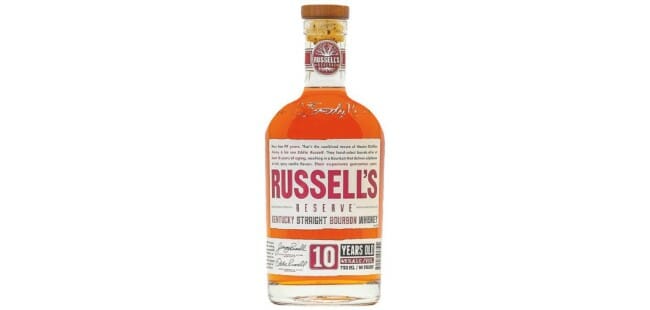
Every distillery has that one core brand that apparently sells well, but is glossed over by the bourbon geeks, and for Wild Turkey that’s definitely the Russell’s Reserve 10 Year. This is largely due to the fact that RR 10 Year is surrounded by other WT brands that overshadow it in one way or another—the classic WT 101 is stronger while also being cheaper, while the Russell’s Reserve Single Barrel and Rare Breed are both significantly stronger, while costing not a whole lot more. That leaves RR 10 Year as something of a forgotten middle child, but it serves a valuable purpose in providing a high age statement bourbon that also represents a more approachable side of Wild Turkey. And that’s a valuable thing for this distillery, when the 101 proof flagship bourbon has an unfair tendency to turn off bourbon newbies for being “too intense.” In fact, the 10 year age statement and 90 proof mirror the Eagle Rare we were just talking about.
It’s also a mistake to think of the Russell’s Reserve brand as being just another name for Wild Turkey, as the younger WT master distiller Eddie Russell puts his own influence on the classic Turkey flavor profile in this series. Expect to find plenty of creamy vanilla, along with graham cracker, a bit of smoke, tobacco and oak that slowly begins edging into older and funkier territory. It’s a classic profile that absolutely fits the bill for casual weeknight sipping, with a little bit of refinement.
Bulleit 10 YearDistillery: Bulleit
ABV: 45.6% (91.2 proof)
Price: $40-50
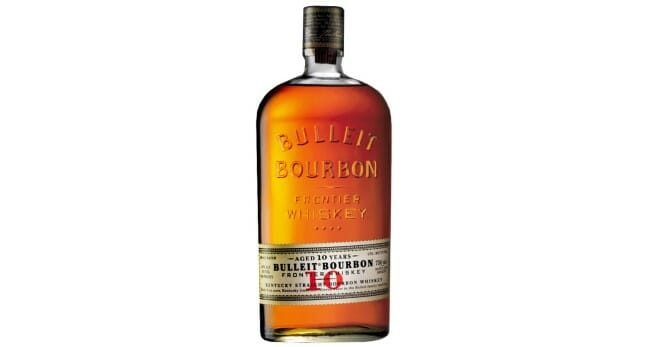
This one is a bit of an interesting case on several levels, because it’s a sourced product from Bulleit (stock this old is likely still from Four Roses, but it’s hard to say for sure), but it also has a price tag that seems to be much more inconsistent than most. You can find this online for as little as $35 in some places, but you’ll also see it positioned at $50 or even beyond. Our advice: Find a place to buy it for around $40, and consider that some excellent value, comparable to buying Four Roses Single Barrel, albeit at a reduced proof.
Regardless, I’ve always found this to be a substantial upgrade over the standard, non-age-statement Bulleit Bourbon, but one that curiously doesn’t seem to attract a lot of attention. The additional few years of aging (at least) brings out a much richer profile that is redolent in baking spices, with notes of cinnamon sugar, clove, star anise and candied ginger, which play well with the high-rye background of Bulleit. In fact, I’d argue that Bulleit 10 Year is a generally underrated product in general, although if I was buying it, I’d feel compelled to seek out a competitive price point, knowing they’re out there.
Wild Turkey Rare BreedDistillery: Wild Turkey
ABV: Roughly 57.5% (115 proof)
Price: $45-50
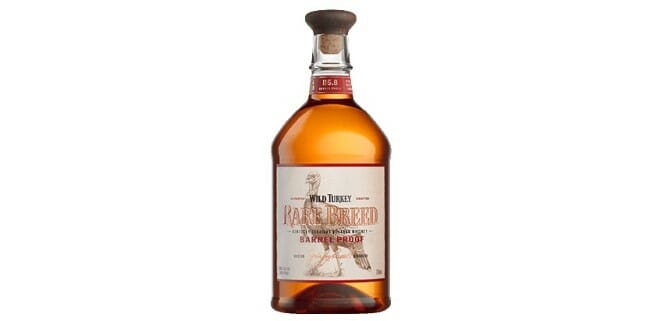
Not to be outdone by the likes of Jim Beam, Wild Turkey also offers consumers a chance to dip a toe into barrel proof bourbon for less than $50 via Rare Breed, a whiskey that the true bourbon geeks know and love. This one is a showcase for the brand’s low barrel entry proof, which is a technique that some distilleries believe yields a more potent flavor profile. That means this small-batch mingling of 6, 8 and 12-year-old bourbons drifts a bit in terms of proof, although it’s usually around 112 to 117, and that is true barrel proof for this distillery—no added water at all.
This yields a classic Wild Turkey flavor bomb, which echoes some of the flavors of the flagship 101, but also transforms them substantially via additional aging and proof. This can be a very spicy and rich dram, with lots of vanilla, caramel and citrus that is made more complex with notes of mint, leather and tobacco/cigar wrapper. It packs a huge amount of flavor into that particular proof point, and is capable of going toe-to-toe with significantly bigger bourbons. Wild Turkey stakes a claim to being one of the best bourbon distilleries in terms of value by producing whiskeys that are exemplary additions in each of these price tiers.
Four Roses Single BarrelDistillery: Four Roses
ABV: 50% (100 proof)
Price: $45-55

It’s important to note that when someone says “Four Roses Single Barrel,” they may be referring to two different things. There’s the one we’re talking about here—the standard version you see on store shelves, at 100 proof, which are all made from Four Roses’ most common “OBSV” recipe—and there’s the barrel proof store picks, which are made from the other 9 bourbon recipes Four Roses uses to blend its flagship bourbon. The latter is truly delicious, but you’re not likely to ever find it for less than $60, so we’re focusing only on the “standard” version of Four Roses Single Barrel here.
What we have here is a decently aged (about 8 years), single barrel expression of Four Rose’s classic high-rye flavor profile, at a proof point that falls neatly between “approachable” and “intense.” The OBSV recipe tends to bring delicate fruitiness into play, although not as much as you’d see in the richer, sweeter Four Roses Small Batch. Instead, Four Roses Single Barrel leans into the spicy character of rye that is the heart and soul of Four Roses, making this perhaps the purest and most indicative expression of what Four Roses bourbon is all about. It’s a classic that never goes out of style, beloved by those who like their bourbon on the high-rye side.
Knob Creek Single Barrel ReserveDistillery: Jim Beam
ABV: 60% (120 proof)
Price: $45-50
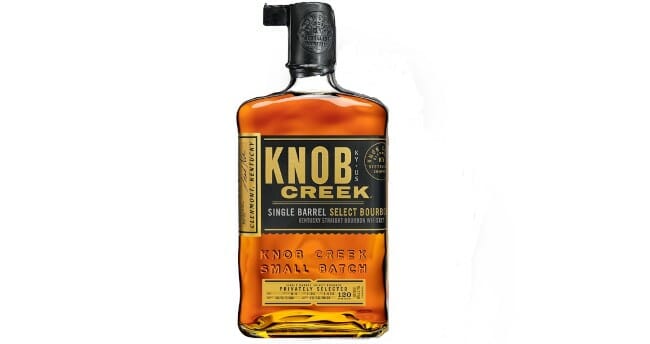
The mid-shelf truly is where Beam’s economies of scale shine the brightest, and where they’re able to offer values that almost no other competitor can match. The Knob Creek range in general is full of value—the 100 proof flagship 9 Year just regained its age statement in 2020 and has an MSRP of $35, which means serious value for a well-aged Beam bourbon. But drop another $10 and you can get Knob Creek Single Barrel Reserve, with its 120 proof that is more or less cask strength! This is simply the best value way you can dip a toe into well-aged, overproof bourbon, and it can get even better if you’re able to find store picks, which can have age statements as high as 14 or 15 years … although these are getting more rare every day.
The extra 20 points of proof transforms the Knob Creek flavor profile nicely, drawing out deeper notes of maple syrup and molasses in many of these single barrel bottles, while also highlighting jammy red fruit notes and a rainbow of caramelized sugar impressions. For less than $50, it’s very hard to find something else that is as rich and characterful.
Pikesville RyeDistillery: Heaven Hill
ABV: 55% (110 proof)
Price: $50-55
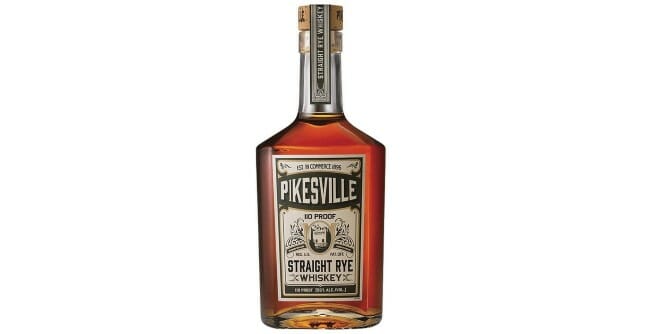
I know, the headline says “bourbon” but I could’t resist getting one rye in here to represent Heaven Hill, whose Elijah Craig Barrel Proof is just a bit too expensive to make the $60 cut. Pikesville Rye has a pedigree that is impossible not to like—it’s the same mash bill and distillate as Heaven Hill’s popular Rittenhouse, but simply bigger and bolder, with a 110 proof point and a six year age statement. It’s the rare case of genuinely taking a good thing and making it even better, amplifying the classic Kentucky rye flavors of Rittenhouse to make something punchy enough to stand out in any cocktail application, regardless of what other flavors you use.
As for the flavors, the extra age and proof points tease out more fruitiness and richness from the Rittenhouse profile, with more of a dark fruit syrup (black cherry, red licorice) backbone dueling with apple pie filling and substantial rye spice, making this feel like the midpoint between “rye whiskey” and “high-rye bourbon.” Despite the proof point, it’s actually quite an engaging and approachable rye for neat drinking as well, with lovely layered flavors of vanilla and orchard fruits. This is just a balanced offering for any use, really, equally pleasant for cocktails or neat drinking that will please both bourbon and rye fans.
Maker’s Mark Cask StrengthDistillery: Maker’s Mark
ABV: Roughly 55-57.5% (110-115 proof)
Price: $50-55
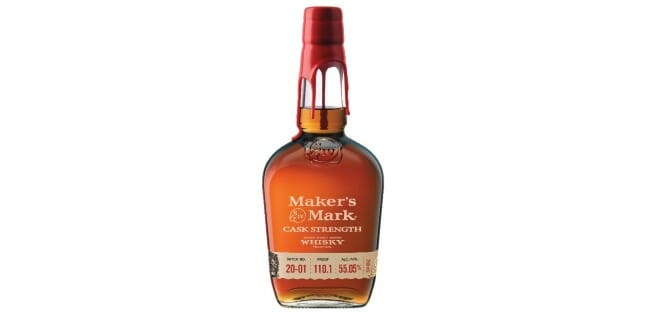
The standard Maker’s Mark Bourbon is itself a very good value ($20-25) as an introductory level wheated bourbon, standing alongside Heaven Hill’s Larceny as one of the two most obvious and affordable ways to explore wheated bourbon without having to shell out the sadly (and pointlessly) inflated prices for Buffalo Trace’s W.L. Weller. But Maker’s Mark Cask Strength is arguably an even bigger value, being one of the most affordable cask-strength bourbons on the market. Like Wild Turkey, Maker’s Mark uses a lower barrel entry proof, which means this one isn’t quite the beast that some other distilleries release as their cask strength offerings, but that fits well with Maker’s reputation for being approachable and friendly whiskey.
The barrel proof expression of Maker’s takes the familiar wheated bourbon flavor profile and sends it into overdrive, yielding massive amounts of sweet vanilla, butterscotch, red fruit, creme brulee, cream of wheat and banana bread. This is a big, decadent sort of bourbon that you might drink alongside a scoop of vanilla ice cream, or a pile of Nilla Wafers and banana pudding.
Noah’s Mill BourbonDistillery: Willett
ABV: 57.15% (114.3 proof)
Price: $50-55
This is a brand that seems to swing back and forth in terms of how much whiskey geeks appreciate it, but it is reliably unique enough to stand out. It’s a product of Willett, but not one that contains any of their own whiskey distillate—they’ve been actually distilling their own product since the early 2010s, but this remains a sourced brand from unknown distilleries. In fact, Noah’s Mill is a blend of sourced bourbons of varying ages, often reported as “between 4 and 20 years old,” although we would suspect it’s primarily younger whiskey. That makes Noah’s Mill perhaps not quite the pure value of something like Wild Turkey Rare Breed, but few things are. It makes up for the lack of a concrete age statement with its solid proof point and bombastic flavors, although the brand often does seem to be an acquired taste.
Fans of Noah’s Mill often note its pleasant combination of nutty and spicy notes, which to us hints at a possible origin point of Beam or Heaven Hill, at least for some of the whiskey involved. Cinnamon, allspice and roasted pecans are classic notes here, along with walnut, caramel and hints of darker fruit or berries. It remains a punchy, fairly affordable way to experience the blending prowess of the folks at Willett, without paying the higher prices for their cask-strength Family Estate whiskeys.
1792 Full ProofDistillery: Barton 1792
ABV: 62.5% (125 proof)
Price: $50-60
This isn’t quite true “cask strength,” but at 125 proof it might as well be. The “full proof” in the name refers to the maximum proof at which bourbon is allowed to enter a newly charred barrel according to U.S. law, which is indeed 125. Basically, this non-age-stated (said to be more than 8 years) expression is meant to be Barton’s “blow the doors off” entry in terms of bombastic flavor profiles, calculated to appeal to the “proof hounds” among bourbon drinkers. And that is indeed the drinker who is most likely to go nuts for 1792 Full Proof, as you’ll see some criticism of this brand online from those who find its ethanol profile to be too harsh or aggressive. It’s a bourbon that benefits in particular from allowing it some time to open up, both in the bottle and in the glass after pouring, so please note that your experience may be considerably different after it’s been in the glass for 20 or 30 minutes.
As for the profile, Barton’s high-rye bourbon mash bill has a seemingly unique ability to produce whiskeys that vary significantly from brand to brand, sometimes coming across as sweeter and more fruity, and other times drier and more spicy. Full Proof hits all of these notes at once, with fruit elements of apple and citrus comingling with big rye spice, assertive heat, baking spices and caramelized sugars. It’s a very bold pour, so perhaps reserve this one for a time when you’re feeling adventurous.
Old Forester 1920 Prohibition StyleDistillery: Brown-Forman
ABV: 57.5% (115 proof)
Price: $55-60
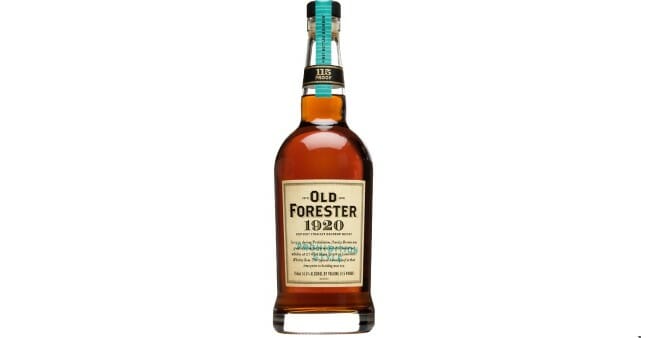
You won’t have to look far to find whiskey geeks who adore this particular bourbon, which seems to have been anointed by most as the crown jewel of Old Forester’s Whiskey Row series. That’s not just down to taste, but also value—this one combines an attractively high proof point with explosive flavors and a price tag that is pretty generous to boot. It begs to be used in special occasion cocktails, although be warned that doing so may put you on the floor very quickly.
All the bourbons in the Old Forester family are made from the same mash bill and essentially the same barrels, being defined by different periods of aging, proof points and positions within the Brown-Forman warehouses. The 1920 Prohibition Style just seems to be a sweet spot—it packs almost all the flavors that people love about the distillery’s yearly Old Forester Birthday Bourbon releases, but at a far more affordable price. You get tons of brown sugar, juicy maraschino cherry, baking spices, cocoa and marshmallow, all for giving up a specific age statement. And when it tastes this good, we don’t mind doing that one bit. Here’s hoping this one never gets jacked up in price, because as the bourbon market continues to get more expensive, 1920 Prohibition Style has only seen its relative value increase in the last 5 years.
Belle Meade ReserveDistillery: Nelson’s Green Brier Distillery
ABV: 54.15% (108.3 proof)
Price: $60
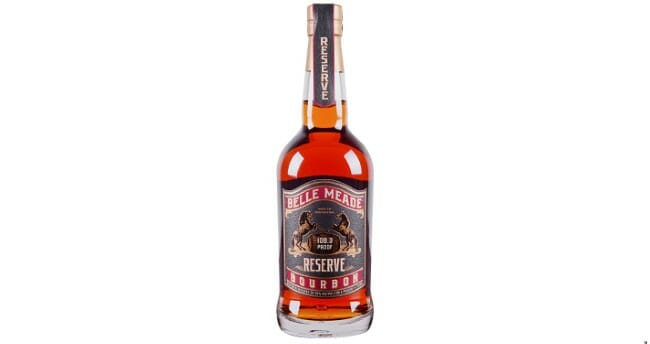
There’s a whole lot of bourbon from MGP (Midwestern Grain Products) of Indiana on the whiskey market, but you’ll occasionally get roped into paying an arm and a leg for it, especially as the proof point rises. This makes Belle Meade Reserve an attractive middle ground—it’s not quite at the barrel proof that a lot of people are craving, but it’s not far off from it either. Neither does it have a concrete age statement, but it’s older than most, and is a good source of the high-rye MGP bourbon that a lot of whiskey geeks crave these days. The brand was once “cask strength” but eventually standardized to 108.3 proof in an effort to make batches consistent.
That means, for far, far less than the likes of Kentucky Owl you can get a blend of 7 to 11-year-old high-rye MGP bourbons from Belle Meade. It likewise has the overproof punch to be very full flavored, while its lower profile keeps the price tag around $60. For that, you get pronounced flavors of old oak, stone fruit, cornbread, cocoa, mint and more. If you know that you enjoy MGP’s bourbon, and want a well-aged, overproof expression, this remains possibly the best value play out there.
Baker’s Single Barrel BourbonDistillery: Jim Beam
ABV: 53.5% (107 proof)
Price: $60
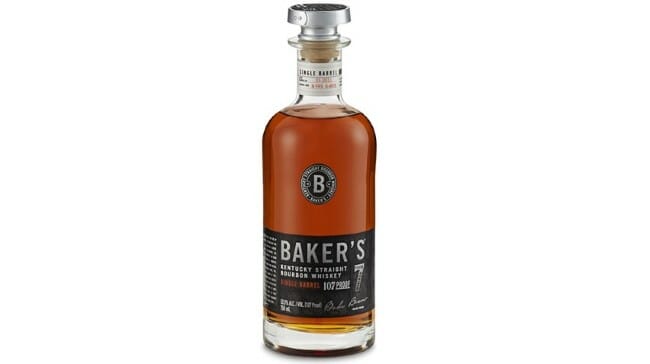
Baker’s always seemed to be the odd brand out in Jim Beam’s small batch collection, lacking the strength of Booker’s or the age statement/value of Knob Creek, and its position would have become even more ill-defined with the new addition of Knob Creek 12-Year-Old to the year-round lineup. Beam wisely saw there was a need to redefine what Baker’s was all about, however, and re-launched it this year as a single barrel expression, retaining the same mid-strength 107 proof and base of a 7-year age statement, although individual bottles of Baker’s can also now be significantly older. My sample, for instance, is labeled as 8 years and 3 months, a fairly substantial upgrade. Whiskey geeks will also likely notice that it now seems to be sharing the same bottle as Beam’s own Legent whiskey.
Tasting this again, I like it even more than I first did, picking up in particular more of a tobacco savoriness that seems to increase the longer this bourbon is sitting in the glass. It plays nicely with notes of peanut butter and roasted peanut shells, caramel corn, slight char and cinnamon, fennel and anise. The baking spices are particularly nice here, nicely balancing the nuttiness that is a signature of many of Beam’s bourbons, although the oakiness still seems somewhat green in character.
Still, this is a robust and flavorful bourbon that isn’t lacking for assertiveness or interesting flavors. If you’re looking for something that’s more on the sweet, rich, nutty and savory side in this price range, it’s a good fit. If you want more of an oak presence, meanwhile, you can always go for the Knob Creek 12 instead, for the same MSRP. Beam certainly is not hurting for options here.
Bardstown Bourbon Fusion SeriesDistillery: Bardstown Bourbon Co.
ABV: 47.45% (94.9 proof)
Price: $60
The availability of products from Kentucky’s still youthful Bardstown Bourbon Co. continues to expand, and they continue to make new fans along the way. There are a number of younger generation Kentucky distilleries that are building flagships around the concept of blending their own younger distillate with well-aged sourced whiskeys, but few are consistently doing it as well as Bardstown Bourbon Co. The company’s Discovery series carries a hefty price tag, being a well-aged blend of sourced bourbons that is worthy of the attention it’s received, but I find myself more interested in the long run in the Fusion series, which blends a sizeable portion of that well-aged Kentucky bourbon with Bardstown’s increasingly aged stock. When I first tasted a Fusion release, that meant 11-year-old sourced bourbon blended with 2-year-old product from Bardstown. In this most recent release, Fusion Series #4, that has become 13-year-old sourced bourbon blended with 3 and 4-year-old Bardstown stock, and the progress they’re making is clear.
The result is lent complexity and depth by the older bourbon in the mix, while still highlighting Bardstown’s own distilling program. Chocolate, cherry, raspberry and vanilla lend this one a slightly decadent nose, with a bit of musty graininess and nut butter (hazelnut spread?) speaking more toward its youth. Nicely integrated alcohol on the palate gives way to notes of vanilla, toffee and juicy cherry, which actually puts me a bit in the mind of a classic Buffalo Trace bourbon—sacrilege to make a direct comparison, perhaps, but fully intended as a compliment. Fusion #4 is a particularly nice neat drinker, in need of no dilution, and it spotlights one of the emerging stars of the Kentucky bourbon world. It makes all the sense in the world to assume that the series will probably only keep getting better.
Jim Vorel is a Paste staff writer and resident liquor geek. You can follow him on Twitter for more drink writing.


